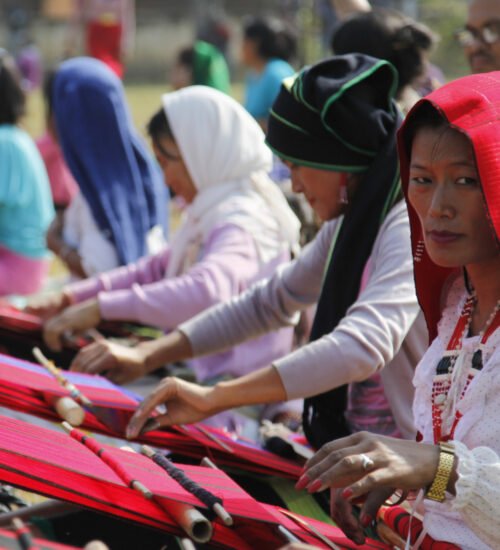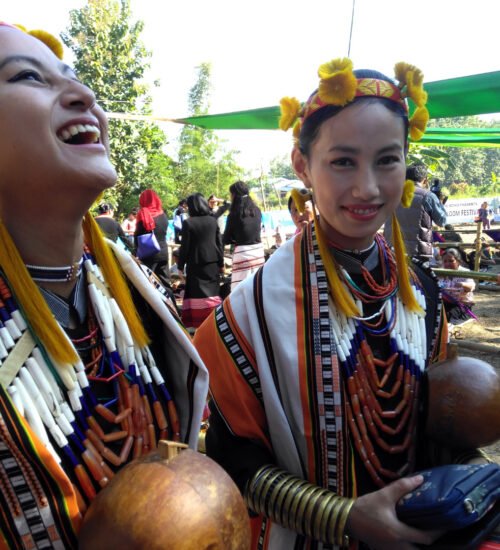
Community empowerment
Culture is a pathway to development and has the potential to evolve as a key catalyst in community-led sustainable development. The ancestral techniques are demanding in terms of time and effort, but not equally rewarding as the textiles produced don’t have a large local demand. Consumers prefer machine-made cheaper fabrics, therefore the art of weaving using traditional methods is slowly dying, and these artisanal communities are under threat.
At Shamanica, we support indigenous female weavers’ communities in Nagaland ( NE India), West Bengal, Assam, Varanasi, Coimbatore, as well as other communities who hold the most luxurious and precious knowledge and produce unique handlooms rarely exposed to the outside world, due to the lack of organization and marketing, by buying their exquisite fabrics to create our timeless, elegant pieces.
Our mission is to create a net of interconnected clusters: WAL (world artisans league), not only to preserve the most amazing textile traditions but as a vehicle for the global union. On times where so many forces are pulling us apart, we aim to find a common thread that can unite communities and countries

Preserving Traditions
At Shamanica Communities, we are on a mission to revive and preserve the most amazing textile crafts and support indigenous female weavers’ communities spread across India, such as Nagaland, West Bengal, Assam, Varanasi, Coimbatore, Bihar, and other clusters who hold the most unique and
precious knowledge, and produce luxurious handlooms rarely exposed to the outside world, due
to the lack of organization and marketing, by buying their exquisite fabrics to create our timeless, elegant pieces, while boosting the regenerative development of their economies and improving their livelihoods, using culture as a vehicle for a change.



Reviving the Crafts
Our goal at Shamanica, is to locally develop the artisans’ clusters, socially and environmentally by making the whole process holistic and transparent. We can achieve this by connecting the local supply chain, educating local families on agroforestry systems, and giving them the option and opportunities to produce and sell their fiber production. Thus creating strong livelihoods, resilient and ready for the future, and to regenerate deserted monocultive land with textile farming using agroforestry systems in order to improve the land and livelihood of local people.

